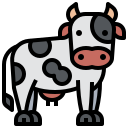22 Patterns and sequences
In this section, we'll take a look at sequences and progressions.
Number sequences can be thought of as numbers arranged according to some defined order. The one we're probably most familiar with is what most people would simply call counting: 1, 2, 3, 4, 5... and so on. We begin to come to terms with some of the more sophisticated aspects of sequences the moment we progress from counting by 1s to counting by 2s, 5s or 10s. We can also count by less than whole numbers: 0.25, 0.5, 0.75, 1... and we might even see sequences that seem to alternate: 2, 5, 3, 6, 4, 7,… or don’t even follow a pattern as far as we can tell: 11, 6, 3, 5, 4,...
We have already seen a number of sequences when looking for patterns in problem solving, and in Topic 3 we looked at the language around sequential information (e.g. plots with respect to time). Here we focus on two special types of sequences, ‘arithmetic progressions’ and ‘geometric progressions’, which help us to understand general trends of growth or decay - linear and exponential respectively.
Let's get started with the following problems. Spend 10-15 minutes on one or both of the following questions. Be sure to annotate your work to make note of where you have specialised (is it random, systematic, artful?), generalised, any conjectures and justification arguments you make.
Sequences and progressions exercises
Cows

|
Suppose a cow gives birth to another female when it turns 2 and then another every year on its birthday. Each of its offspring do the same (with none of these cows giving birth to males). If this continues, and neither the first cow nor any of those born afterward die, how many cows will there be after 12 years?
(Adapted from Dudeney, 1967) |
Planets

|
Between Mars and Jupiter lies a belt of asteroids. These are, perhaps, the remains of an old planet which disintegrated many years ago. We'll call this planet Planet [latex]x[/latex].
The table compares the distances of some planets from the sun with that of our earth. For example, Saturn is 10 times as far away from the Sun as the Earth. Scientists usually write this as 10 A.U. (Astronomical Units). Can you spot any pattern in the sequence of approximate relative distances? Can you use this pattern to predict missing figures? How far do you think Planet [latex]x[/latex] was from the sun? Check your completed table with information available online. Where does the pattern seem to break down?
|
Progressions
Rather than sequences in general, we will focus on progressions, defined as 'a sequence of terms, where there is a constant relationship between any pair of sequential terms.'
The two types of progressions we’ll look at are arithmetic progressions, e.g. 2, 4, 6, 8, …, where the constant relationship is the addition of 2, and geometric progressions, e.g. 2,4,8,16,32,…, where the constant relationship is the multiplication of 2.
Fibonacci sequences, (this is a hint for the Cows example -- as for Bees in earlier topics) are not "progressions" because, although there is a rule, the relationship between each term is not constant. Similarly, the sequence of square numbers, 1, 4, 9, 16, 25, …, is also not a progression because the relationship between two terms isn’t constant here either. We will focus on some results pertaining to the arithmetic and geometric progressions, however you may also be interested to search for information on harmonic progressions.
References
Dudeney, H (1967), 536 Puzzles and Curious Problems, Souvenir Press.


